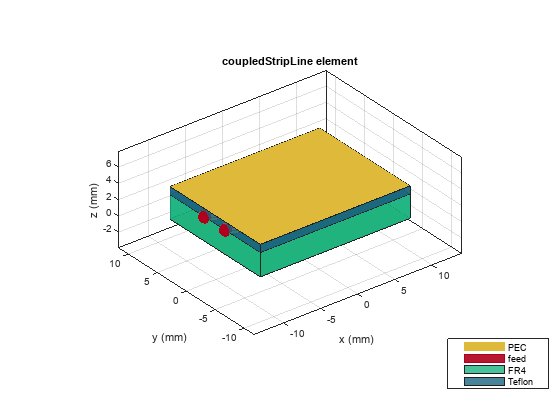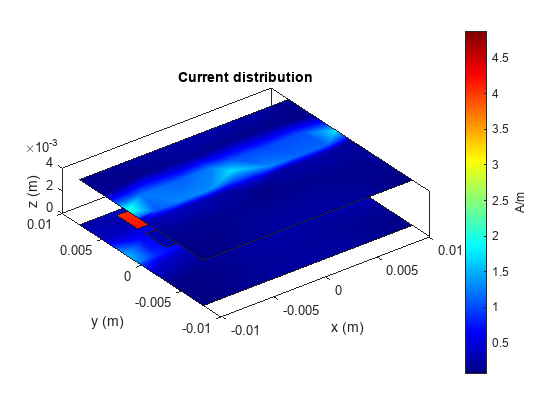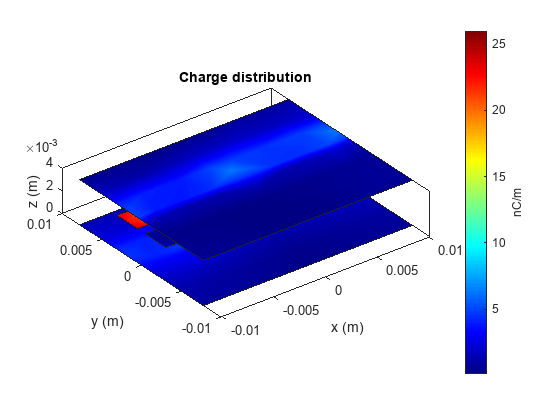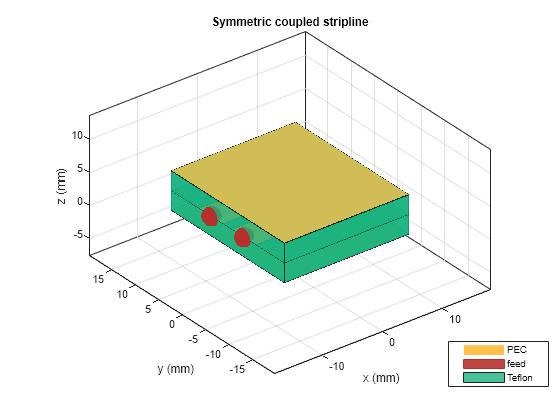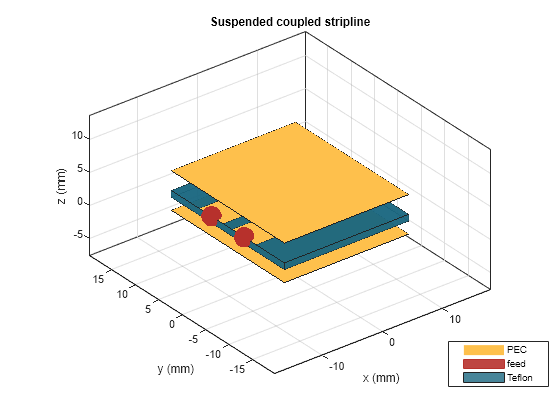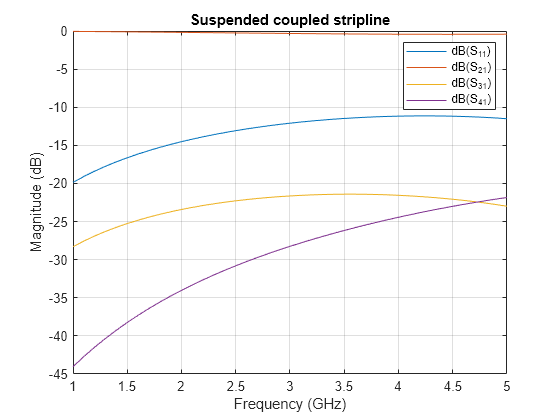coupledStripLine
Description
Use the coupledStripLine object to create an edge-coupled
differential pair transmission line in a stripline form. Coupled striplines are used to
connect RF components, such as directional couplers, within the inner layers of a PCB
board.
For the electromagnetic (EM) interactions between the ground planes, the feeds are located on the centers of the strips' edges at the board boundary and are simultaneously excited against both ground planes.
Types and applications of coupled stripline transmission lines:
Symmetric or Plain— Transmission lines embedded in the internal layers of a PCB equally (symmetrically) spaced between two ground planes.Asymmetric— Transmission lines embedded in the internal layers of a PCB unequally (asymmetrically) spaced between two ground planes.Suspended— PCB stripline suspended between two parallel ground planes with air gaps between the stripline and the ground planes. This configuration provides higher Q and lower losses than solid dielectric layers.
Creation
Description
sline = coupledStripLine creates a default coupled transmission
line in the stripline form. The default properties are for a resonant frequency of 2.5
GHz along the X-Y plane.
sline = coupledStripLine(
sets properties using one or more name value pair arguments. For example, PropertyName=Value)sline
= coupledStripLine(Length=0.0300) creates a coupled stripline of length
0.0300 meters. Properties not specified retain their default values.
Properties
Object Functions
charge | Calculate and plot charge distribution |
current | Calculate and plot current distribution |
design | Design symmetric coupled stripline transmission line around given frequency |
feedCurrent | Calculate current at feed port |
getZ0 | Calculate characteristic impedance of transmission line |
mesh | Change and view mesh properties of metal or dielectric in PCB component |
show | Display PCB component structure or PCB shape |
sparameters | Calculate S-parameters for RF PCB objects |
layout | Plot all metal layers and board shape |
shapes | Extract all metal layer shapes of PCB component |
rlgc | Compute resistances, inductances, conductances, and capacitances |
getZEven | Calculate even mode impedance of differential PCB transmission line |
getZOdd | Calculate odd mode impedance of differential PCB transmission line |
propagationDelay | Compute propagation delay of transmission line |
dgs | Create defected ground structure of PCB element |
optimize | Optimize pcb catalog object |
EHfields | Electric and magnetic fields of PCB components |
Examples
More About
References
[1] Pozar, Microwave Engineering / David M. Pozar, University of Massachusetts at Amherst.
[2] Cohn, S.B. “Shielded Coupled-Strip Transmission Line.” IEEE Transactions on Microwave Theory and Techniques 3, no. 5 (October 1955): 29–38. https://doi.org/10.1109/TMTT.1955.1124973.
Version History
Introduced in R2024a
See Also
coplanarWaveguide | stripLine | microstripLine | coupledMicrostripLine

